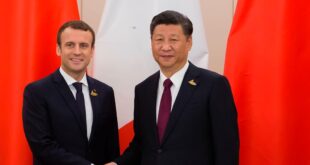The Egyptian pound dropped to a five-month low this week as regional tensions spiked and speculation mounted about a recession in the US.
It briefly reached EGP49.55 against the dollar on Monday morning, close to the record EGP49.56 set when the Central Bank of Egypt floated the currency on March 6.
By midday on Monday, the pound had stabilised at around EGP49.25, a depreciation of 8.5 percent compared to the July average of EGP45.05.
Another slide in a currency that has already depreciated by nearly a third since March will be concerning news for a government trying to bring inflation – which dropped below 30 percent for the first time in 15 months in May – back under control.
However, it is also an indication of flexibility in the exchange rate regime, a long-standing policy recommendation of the International Monetary Fund, which agreed an $8 billion extended fund facility following the float in March.
In a third IMF review, released on July 29, the organisation called on Egypt to maintain flexibility in the exchange rate, saying it was “a cornerstone” of the funding programme.
The benchmark EGX30 also recorded its steepest two-day drop since April over the weekend, falling by 5.2 percent.
There are signs of foreign investors exiting the local debt market. Economist Hany Abou El Fotouh told business news site Enterprise on Monday that foreign investors sold $600 million of local debt over the weekend.
Karim Henide, a London-based portfolio manager, said the simultaneous drops in the exchange rate and EGX, and the selling of Egyptian debt, reinforces that the situation is a “foreign flow story”.
Global economic shockwaves have had an impact on emerging markets over the past few days, possibly exacerbated by the unwinding of the Japanese carry trade following the strengthening of the dollar against the yen.
The shocks may be most visible in Egypt, Henide said, because of the popularity of Egyptian debt and the size of its own carry trade, in which borrowed money into currencies with higher interest rates to profit from bank deposits.
While this is part of a “global derisking”, he said, Egypt is “likely to be hit disproportionately”.
 موقع وجه أفريقيا موقع وجه أفريقيا هو موقع مهتم بمتابعة التطورات في القارة الأفريقية
موقع وجه أفريقيا موقع وجه أفريقيا هو موقع مهتم بمتابعة التطورات في القارة الأفريقية


